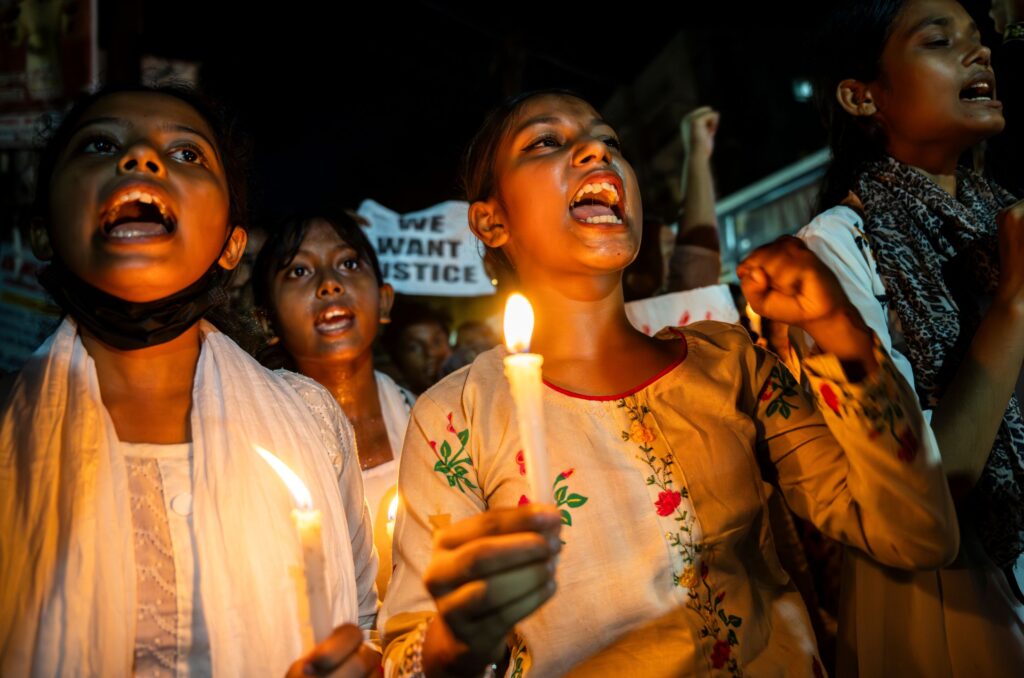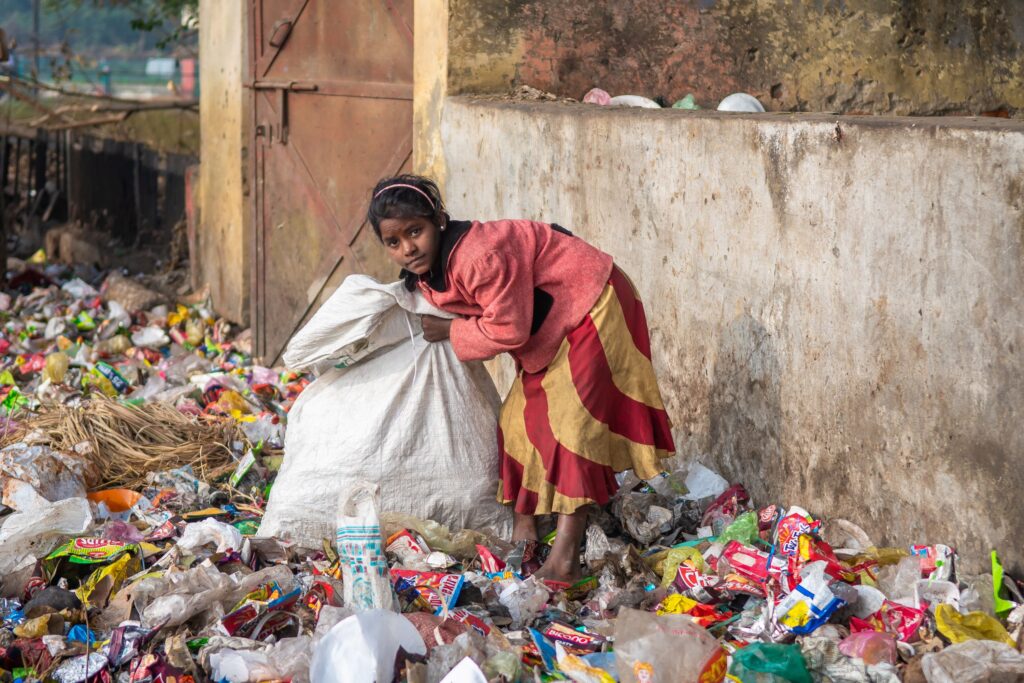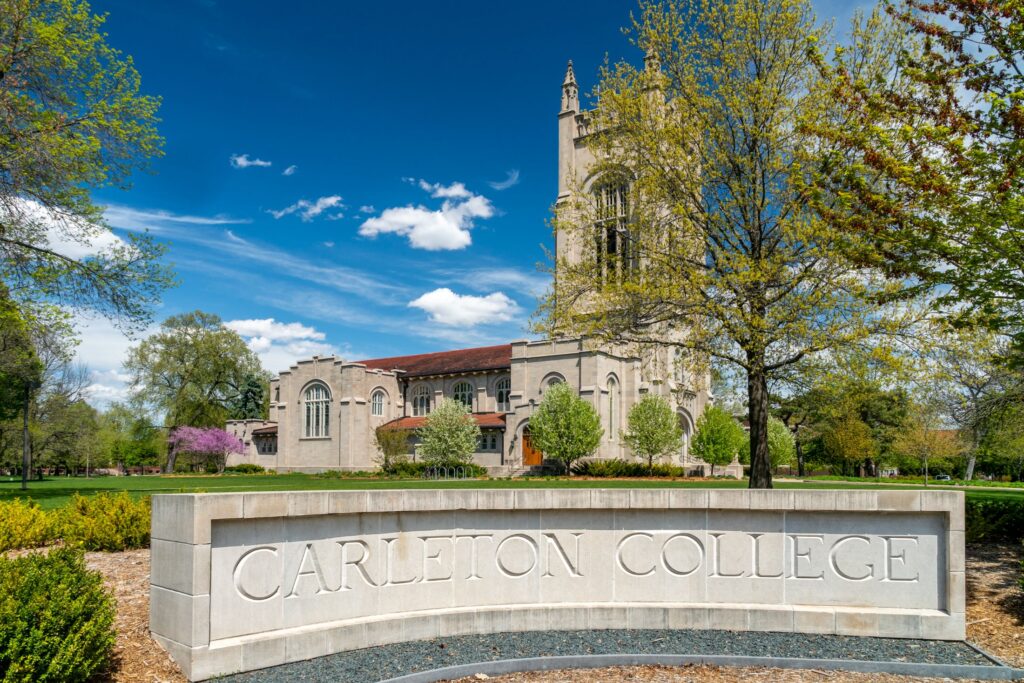Illusions of Safety: Sexual Assault from India to the US
In the fall of 2019, a young student from India left her home country to pursue a bachelor’s degree in the United States. She began her education at Carleton College, a highly ranked private liberal arts school in Minnesota. This past June, the student — adopting the pseudonym Jane Doe — filed a case against… Continue reading Illusions of Safety: Sexual Assault from India to the US The post Illusions of Safety: Sexual Assault from India to the US appeared first on Fair Observer.

In the fall of 2019, a young student from India left her home country to pursue a bachelor’s degree in the United States. She began her education at Carleton College, a highly ranked private liberal arts school in Minnesota. This past June, the student — adopting the pseudonym Jane Doe — filed a case against the college, stating she was groomed and assaulted by a Carleton College administrator and alumnus named Don Smith. She argued the college not only enabled the abuse but treated the misconduct with deliberate indifference. An examination of the realities of sexual abuse in India and the US demonstrates that even on college campuses, female safety is often an illusion.
Sexual assault across countries and cultures
Jane’s home country of India is known as one of the most dangerous countries for women. Sexual violence is so pervasive that some consider it the norm. Many girls grow up expecting to experience sexual harassment or assault at some point in their lives.
In early August, the rape and murder of a female doctor in training on her college campus in Kolkata added to India’s troubling record of horrific sexual violence against women. The brutal attack sparked massive protests and strikes across the country after she was found dead on the podium of a seminar hall with injuries that suggested torture. Months later, the government is still responding to the crime and its repercussions as women demand justice and legal reform.

The Kolkata incident represents just one of the thousands of cases documented each year, with a rape reported every 15 minutes. Women in rural communities or those in lower castes, particularly the Dalits, are particularly vulnerable to sexual abuse. Dalits are known as impure “untouchables” in India, often working as street sweepers and latrine cleaners. They are sometimes manipulated into forced labor or prostitution.
Seen as lesser than others, Dalit women who face abuse are often dismissed, silenced or are subjected to victim-blaming. This is despite overwhelming evidence of abuse — with one study finding that over 83% of Dalit women face sexual harassment or assault in their lifetime.
Upper-caste men often target lower-caste women who are less likely to report them. They leverage their social standing and associated privilege to manipulate or cover up the case. This pattern is mirrored in the US, where men in positions of power target women who are lower on the socioeconomic ladder because they believe they will not be caught (i.e., men like Harvey Weinstein).
In India, cultural censorship of women, combined with inefficient government support, discourages them from reporting assaults and seeking help. Outdated practices, such as the two-finger test, which some doctors still use to verify if a woman was penetrated, are just one of many ways women are humiliated in the aftermath of an assault.

India’s patriarchal culture and gender roles run deep, especially in communities with inadequate access to education and opportunities for development. Even if women stand up to violations of their human rights, they often face shame and ostracization, leading many to avoid coming forward.
Some studies estimate that as many as 99% of rapes go unreported in India. In the US, an estimated 63% of sexual assaults go unreported. The majority of data surrounding sexual abuse in India focuses primarily on rape, with studies on sexual harassment and other types of sexual assault (nonconsensual kissing, groping, touching etc.) receiving far less attention.
Public outrage has led to legislative reforms and increased institutional support for women in recent years. However, sexual assault remains commonplace in India, even for women from more privileged backgrounds, like Jane Doe.
Sexual misconduct in places that are meant to be safe for women, such as work, school or religious institutions, is not unique to countries with a poor track record on these issues. Women also face such threats in American institutions that continuously fail to respond effectively and transparently to cases of sexual misconduct.
Violence towards students in the US
While a family in Kolkata sought justice for their daughter in light of her rape and murder, Jane began her own pursuit of justice in a small college town in Minnesota.
In 2019, Jane left her family behind in Delhi and began her studies at Carleton College in Northfield, Minnesota. She planned to study computer science at the elite institution.

Carleton mandates its academically gifted students to leaven tough coursework with required P.E. classes in their early years on campus. Jane selected a Salsa dance taught by Smith, a Carleton graduate and high-ranking administrator whom the college claimed was an award-winning Salsa dancer. According to a complaint filed with the US District Court in Minnesota (Doe v. Carleton College, 2024), Smith groomed and assaulted Jane over the COVID years in an escalating pattern of abuse.
The complaint states that Smith hired Jane as his co-instructor, requiring her to rehearse with him on campus and at his home nearby. Jane alleges Smith forcibly massaged her against her will, spanked her, forcibly kissed her, bit her and assaulted her multiple times during rehearsals at his house and on campus. The assaults could be brutal and allegedly included beatings, choking and drugging.
According to the college, Jane told a Carleton dean in early February 2022 that she had been attacked at the home of a faculty member, and that she needed extra time to complete assignments due to the trauma caused by those attacks. The dean refused to assist, however, and essentially told Jane to work harder. Discouraged by Carleton’s inaction and Smith’s claim that his administration ties would protect him against her allegations, Jane endured escalating abuse until she presented Carleton with Smith’s written confession and photos of her injuries. Carleton quietly terminated Smith after some time, and the college’s Title IX coordinator told Jane to keep quiet about the incident.
Like many victims of campus sexual assault, Jane’s academic performance suffered. Rather than assist Jane, Carleton placed her on academic review and at threat of suspension for missing a COVID test while she was being assaulted by Smith. Jane said she felt “even more trapped” and that “she struggled to cope with the emotional distress caused by the instructor and the institution.” Despite her hardships, she met Carleton’s academic standards but continued to be harassed by the school.
Jane’s complaint alleges that Carleton failed to adequately supervise the instructor’s behavior and that the school was deliberately indifferent to the misconduct. It further states that the Title IX Coordinator failed to investigate the situation, allegedly violating Carleton’s Title IX policies and procedures, as well as federal law.
Jane is now suing Carleton for five counts per the First Amended Complaint: Vicarious Liability for Assault and Battery, Vicarious Liability for Sexual Abuse, Negligent Retention, Negligent Supervision and Vicarious Liability for Negligence.
In response, Carleton has called Smith a “predator” and said it regrets Jane’s experience at Carleton, but that Carleton has no legal liability for the sexual assault committed by its administrator. On August 19, two months after the initial filing, Carleton filed a motion to dismiss the case. The school claims — in direct contradiction to federal law — that it has no responsibility to investigate sexual misconduct. The motion was subsequently withdrawn after Jane amended her complaint.
Despite cultivating a DEI-friendly institutional facade that includes a full-time dedicated Indigenous Community Liaison on a small campus with a negligible indigenous population, Carleton College has a sordid history of turning a blind eye to campus sexual assault. A group of Carleton alumni, frustrated with the college’s attempts to whitewash its past, started a website dedicated to collecting survivor stories starting from the 1960s and documenting the numerous lawsuits Carleton has faced, including a seminal 1991 lawsuit that helped establish national standards for responding to complaints made under Title IX. Carleton has already responded to some of the allegations in Jane’s lawsuit by firing at least one of the administrators involved and appointing their lawyer’s employee as Carleton’s Title IX coordinator.
A dark history of sexual misconduct
Maxwell Pope graduated from Carleton in 2020 with a major in Dance and Psychology. During his time at the college, a male professor, Jay Levi, was accused of sexual misconduct. One student alleged the professor groped her inner thigh multiple times and pressed his body into her while they were in a dark room together. Levi was also Smith’s academic advisor during his time at Carleton.
According to Carleton’s student paper, The Carletonian, this was just one of at least nine Title IX claims brought against the professor. Title IX, part of the Education Amendments of 1972, prohibits gender-based discrimination in educational programs that receive federal funding.
After students reported the professor’s inappropriate sexual behavior, he took a “sabbatical.” He returned to campus in 2018. In 2019, a piece in the Carletonian claimed the Title IX investigation was “adjudicated with an opaque set of sanctions.” In a subsequent piece, a student writer expressed shock and anger in response to the misconduct and urged Carlton faculty to “redesign” the sexual misconduct complaint process.
Discussing his time at the college, Pope said, “It was definitely a situation with [Levi] where it felt more like students looking out for students, or students informing students.” He stated, “I don’t remember a time where the college was initiating those conversations — it was definitely a keep-it-quiet situation.”
According to Pope, “transparency would have felt better” in situations of sexual misconduct on campus, a sentiment that is echoed by students across the country in light of cover-ups and institutional censorship.
In recent years, a plethora of elite schools, such as Harvard and Stanford, have been accused of mishandling sexual misconduct. Inadequate responses from administration officials angered students. Given this poor track record, future students fear what will happen if they are assaulted.
Women are at serious risk of sexual abuse in US institutions of higher education. Many institutions refuse to take accountability for enabling continued abuse. One in five women is sexually assaulted during their time in college. Two-thirds of college students are sexually harassed.
Yet according to the National Sexual Violence Resource Center (NSVRC), in 2014, 40% of US colleges stated they had not investigated a single sexual assault case in the previous five years. Compare this data to the number of reported sexual misconduct cases on college campuses, and the fact that two-thirds of assaults in the US go unreported. The numbers don’t add up.
Justice from India to the US
The frequency and perception of assaults vary from country to country. A closer look at how universities in the US respond to accusations of sexual misconduct shows that women are often hurt by a lack of transparency. Jane left a country where both data and attitudes indicate she would have been exposed to sexual misconduct at home, only to encounter it upon arrival in the US.
In India, women face sexual misconduct in schools, hospitals, workplaces, public transportation and at home. Women are raised to be aware of the high likelihood of harassment, abuse and, in the worst-case scenario, rape.
They intimately understand the hardship of speaking out in a country where bureaucratic processes, cultural shame, the caste system and gender roles often form insurmountable obstacles for women seeking justice.
Despite cover-ups and pay-offs, cases from the Kolkata incident in August to the Nirbhaya gang rape of 2012 – which led to the creation of the death penalty for rape in India — galvanized the public and advanced the fight for greater accountability, justice and legislative reform.
In the US, there is greater overall gender equality, better access to medical resources and mental health support, and a longer history of both legislative and institutionalized systemic support for survivors.
In recent years, there have been significant but insufficient cultural shifts toward believing in and standing up for women. Many women are now taught not only how to stand up for themselves, but also that they can stand up for themselves.
Yet beneath the sparkling facades of US institutions, industries and college campuses, there are people like Harvey Weinstein, Larry Nassar and Roger Ailes. There are cover-ups, pay-offs and the slow but sure suffocation of victims by bureaucracy. And then, silence, until women like Jane come forward.

Hailing from the “rape capital of the world,” Jane arrived at an illustrious college campus in the prairies of Minnesota to pursue an education. She describes her college years as polluted by grooming, harassment and assault that severely damaged her physical, mental and emotional well-being.
This story, one of many, forces us to face disheartening truths and uncomfortable realities. Many US parents quake at the thought of sending their daughter to India when she is young, vulnerable and alone. Consider a family in Delhi or a rural village in Bihar and their excitement at the opportunity for their daughter to attend an elite US college.
Imagine them finding out she was abused, manipulated, assaulted and coerced by an educator in a position of power at an institution they believed was safe for their daughter.
It is time we address the reality of sexual abuse in the US, especially in the education system. The lack of transparency and accountability is catastrophic. It hinders both current and future students like Jane from making informed decisions about their educational environment and the associated risks of sexual harassment and assault.
Before pointing fingers at countries like India, we should be honest with ourselves, our communities and our students about the reality of sexual misconduct in our own nation. We must make tangible changes and consider victims in both how we prevent abuse and how we obtain justice.
[Joey T. McFadden and Lee Thompson-Kolar edited this piece.]
The views expressed in this article are the author’s own and do not necessarily reflect Fair Observer’s editorial policy.
The post Illusions of Safety: Sexual Assault from India to the US appeared first on Fair Observer.
What's Your Reaction?









































































































